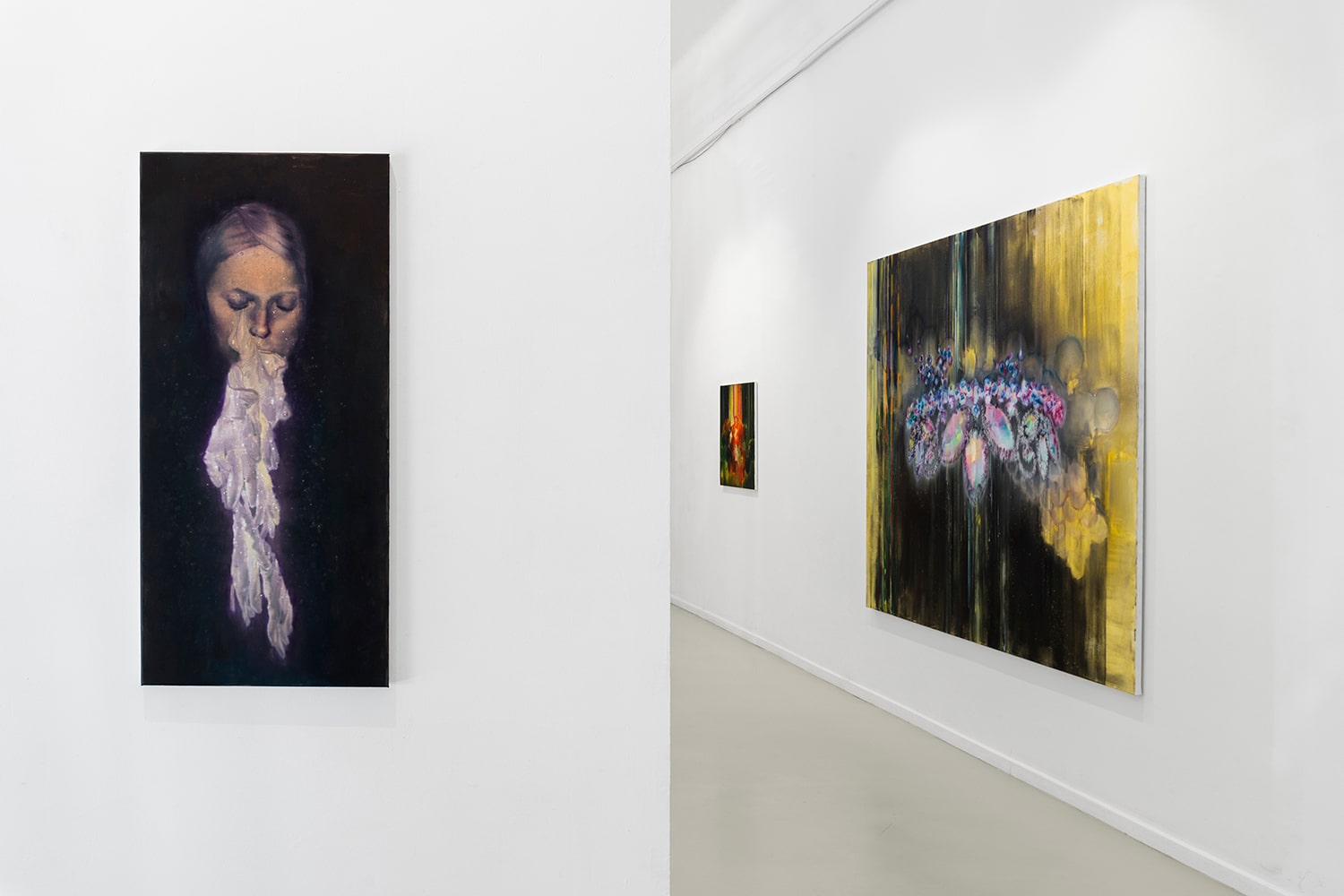
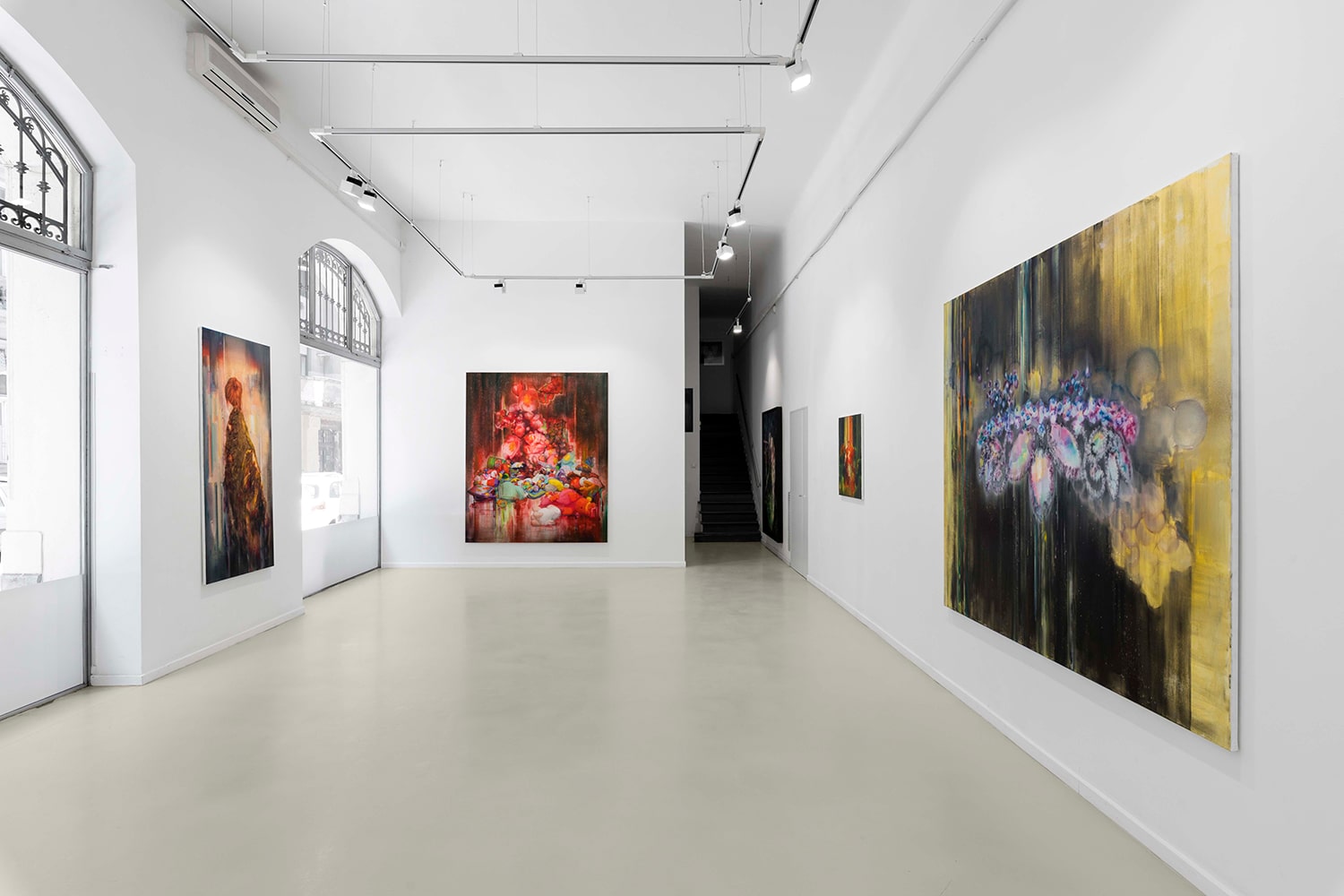
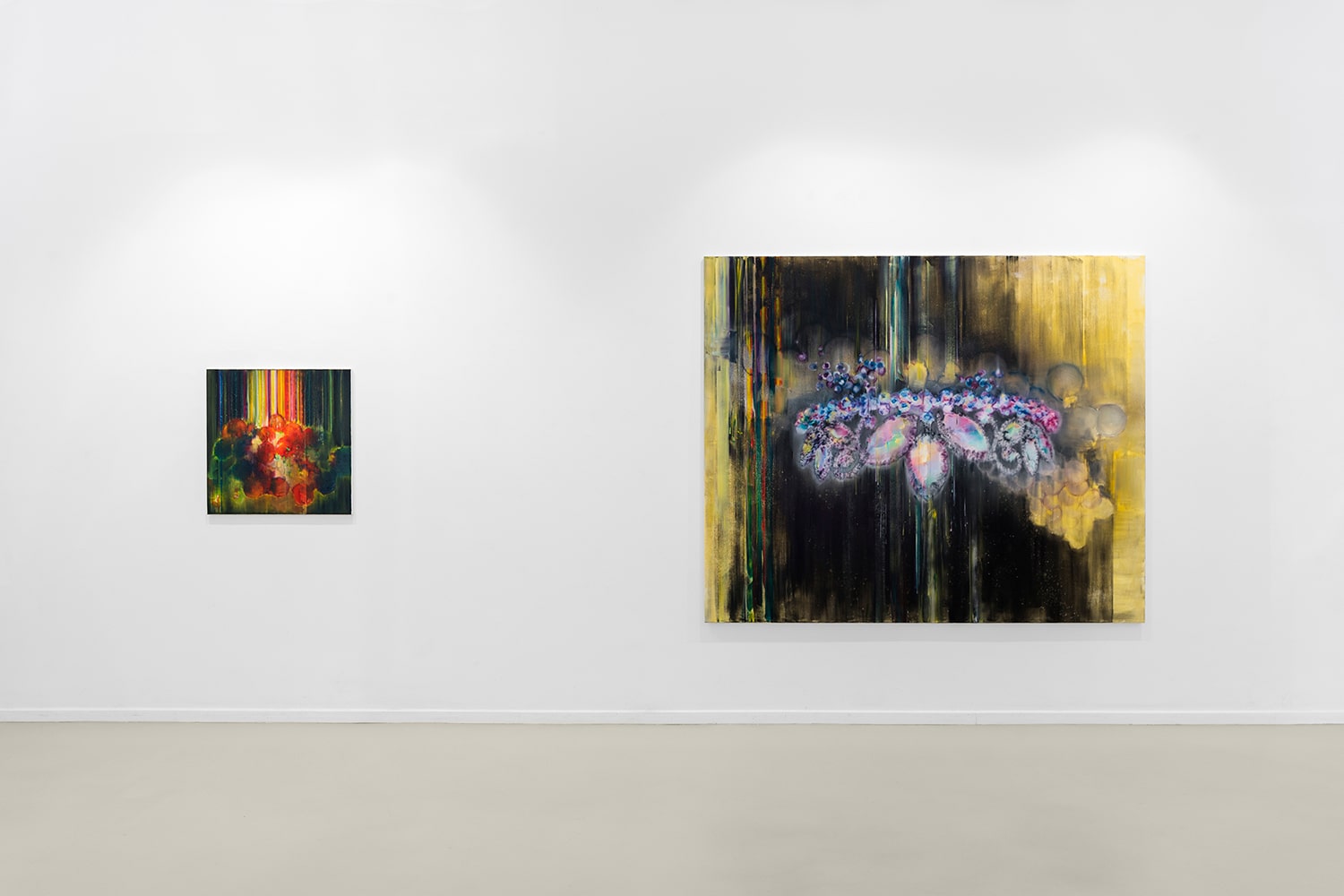
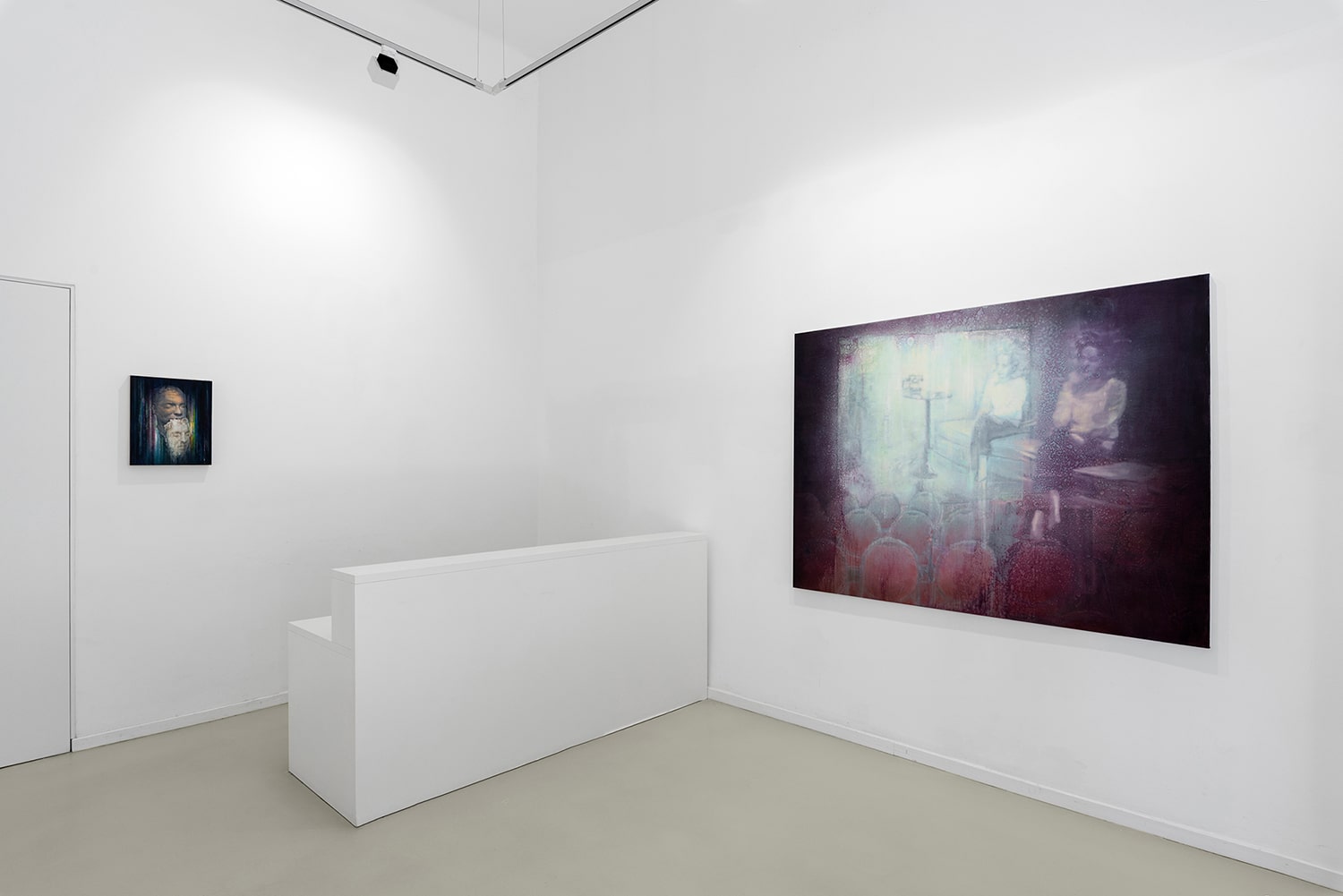
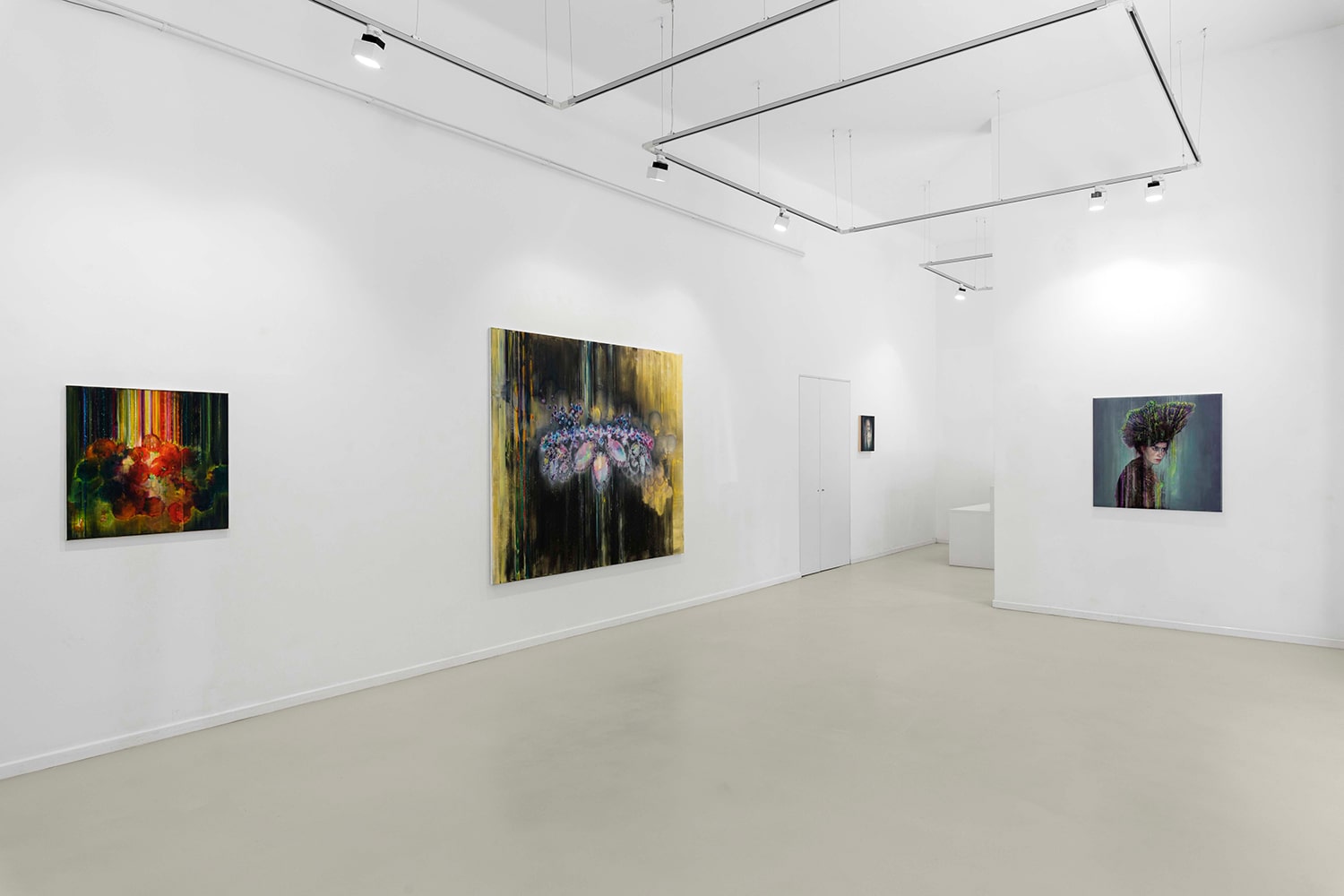
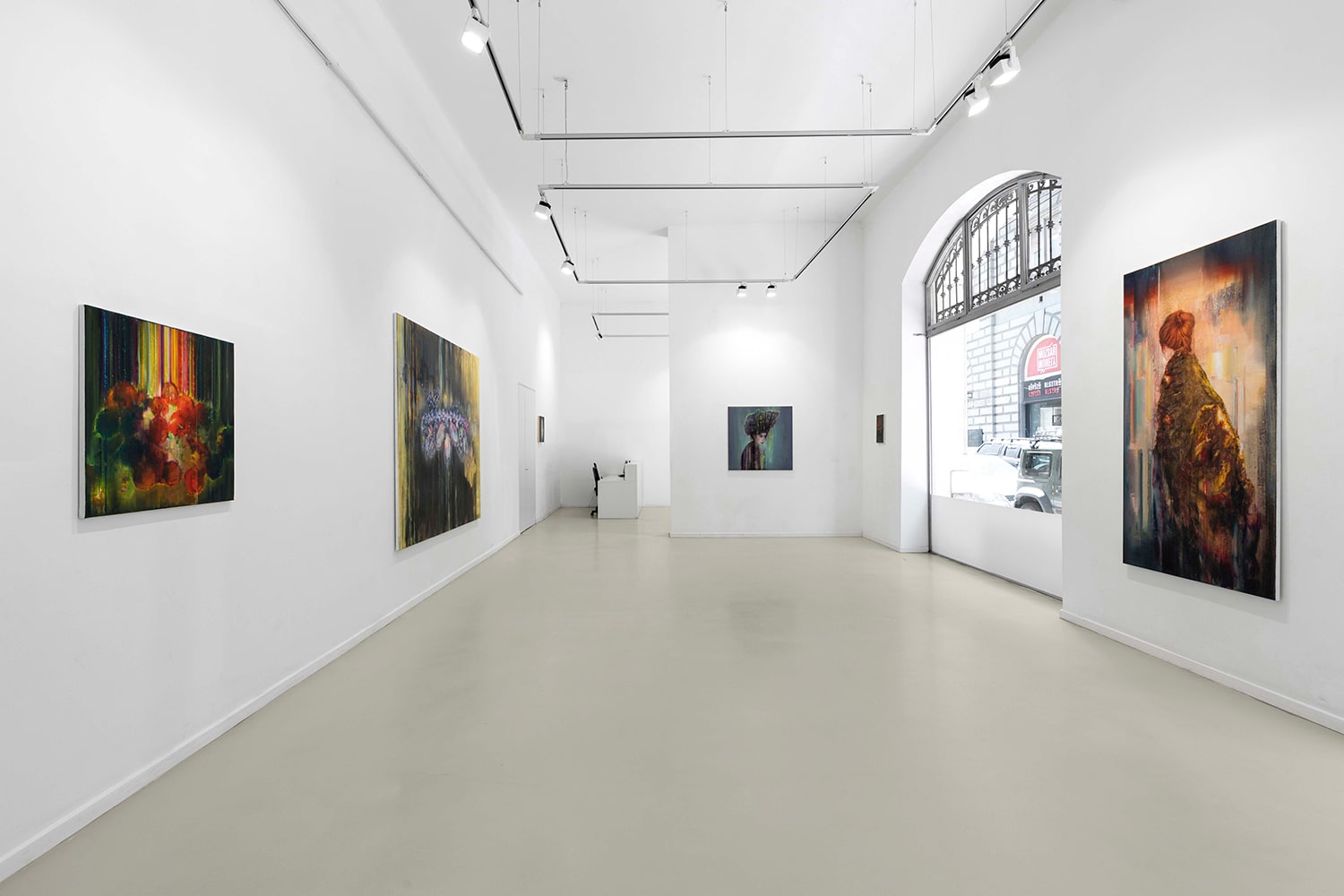
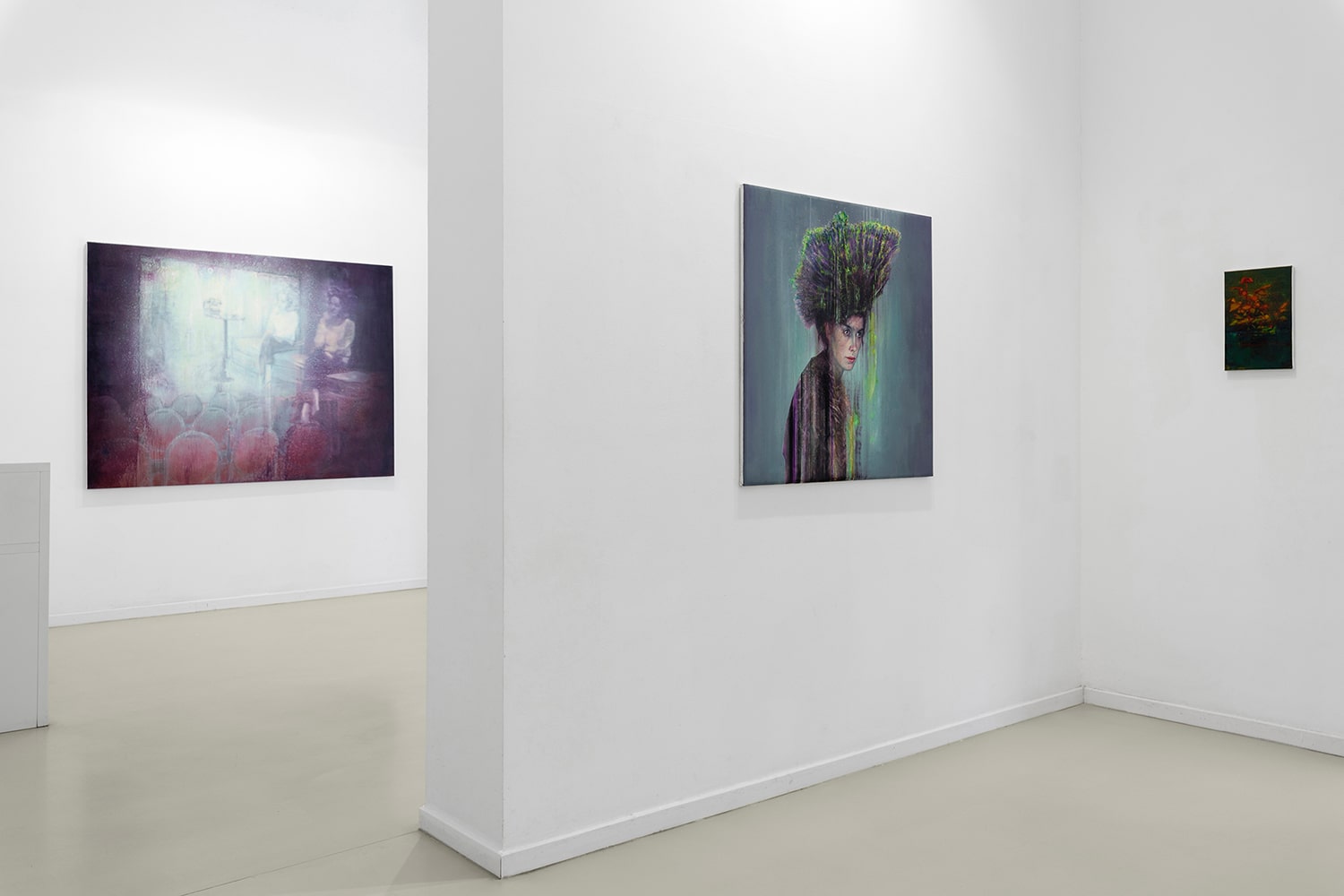
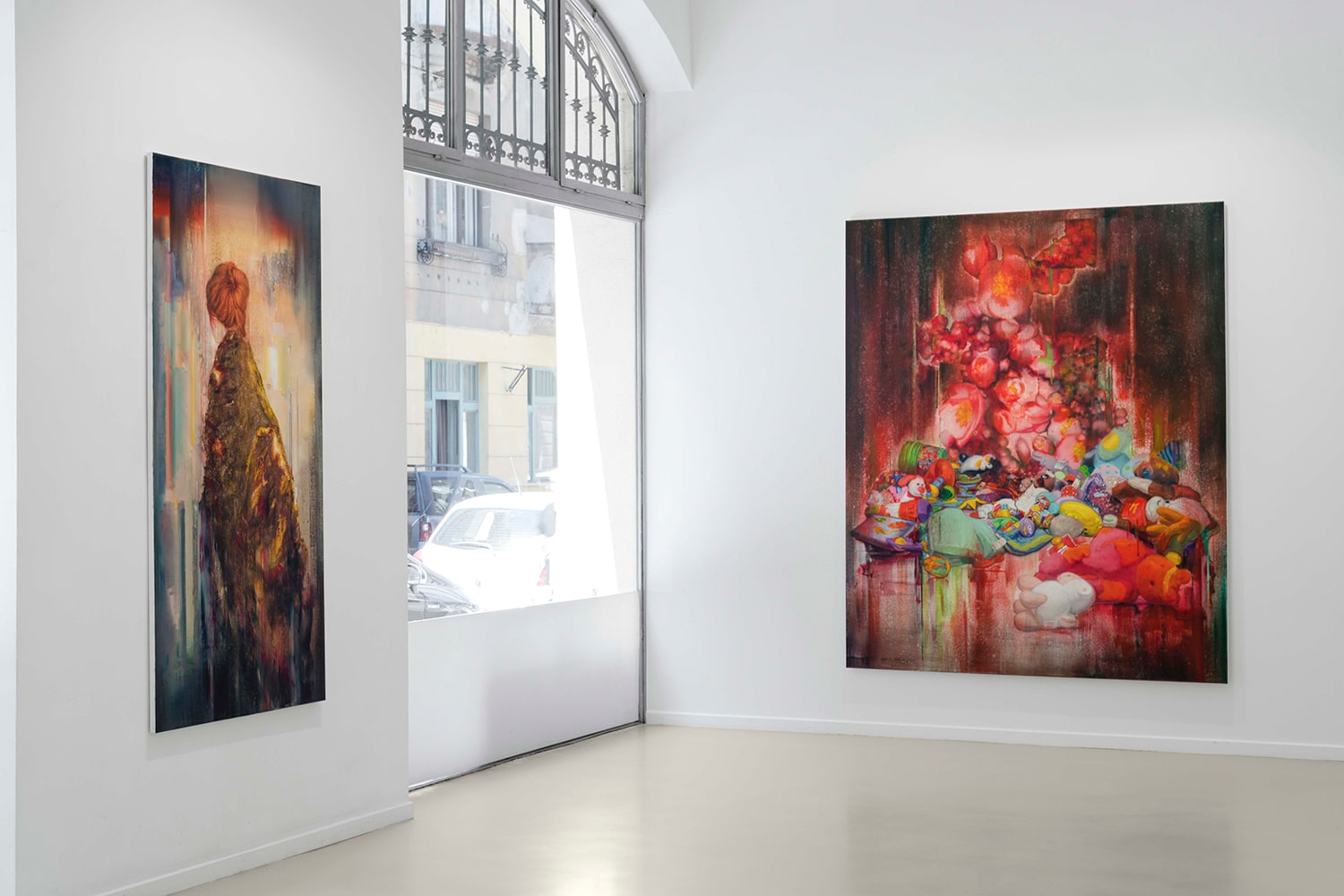
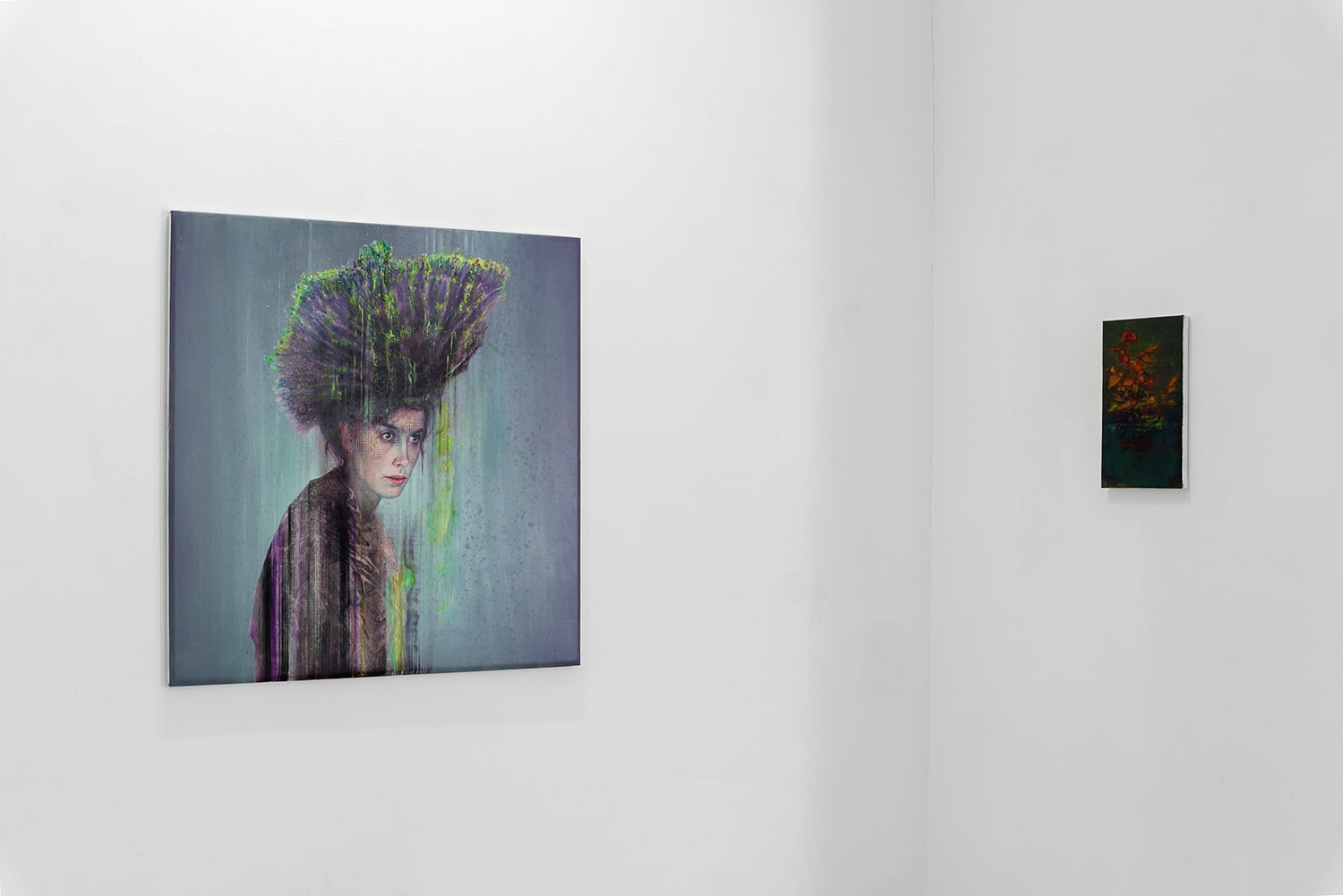
Attila Szűcs
Abundance of Doubt and Wonder
On the opening day, Thursday, May 27th, between 2-7 PM the visitors can meet the artist in the gallery. On the occasion of the exhibition Cannes Film Festival winner director Kornél Mundruczó talks with the artist in a video interview.
The Erika Deák Gallery is delighted to announce the long-awaited exhibition of Attila Szűcs, one of Hungary’s most important contemporary artists.
There is quite a lot happening on the most recent paintings by Attila Szűcs, exhibited now in the Erika Deák Gallery. To use Bruno Latour’s rather old (last century), but of late ever so trendy term, these painted pictures function as quasi objects. They appear at once to be concrete and theoretical objects, actual and imaginary places, abstract and real spaces, where diverse things – objects, images, metaphors, world views, organic and inorganic elements – encounter. In one of his large paintings (Toys-Buds-Skulls), for instance, toys, flowers and skulls form a vast pile, which is eerie because the almost tangible motifs interlink, or rather fuse, different visual paradigms. The vibrant array of distinctly outlined plush figures in the centre of the image almost imperceptibly morphs into a floral orgy of a completely different scale, behind which a hill of skulls can be discerned. From the perspective of skulls, the semantic domain of the discarded or just heaped toys also shifts towards dimensions of horror, and from the flowers, the figure of some sort of golem seems to emerge. Moreover, the pyramidal pile/golem is hovering in an ambivalent, molten, dissolved space (in the literal sense, too: sprayed with solvent), rendered powerfully and surprisingly material precisely by the fact that the solvent breaks the illusion of the coherent painted picture and reveals the tangible materiality of the paint and the canvas.
As a painter, Attila Szűcs has been intrigued by the functioning of painted and designed illusion since the very beginning (more specifically: for over thirty years now). In fact, the last thirty to forty years have brought about massive changes in the technological and epistemological progress of illusion, as the referentiality of painting has drifted from the reality of photographs and papers to the space of the screen, and the philosophical questions of representation have been replaced by perspectives of diverse simulations as well as the post-internet and post-truth. Additionally, the catastrophic tension between the discursive and the tangible, the virtual and the actual reality has become greater than ever, projecting the nightmarish vision of a real, biological and political apocalypse (ecological and economic collapse). In the perspective of the speculative realism that focuses on the nature of existing things, and the dark ecology it implies, the way out of all of this is to be sought not in utopias (the large-scale reform of the world and human thought), but rather in a more accurate – physically and biologically fuller – understanding of the nature of our illusions.
Dark ecology and speculative realism love romanticism and take pleasure in panpsychism (which endows both the organic and inorganic worlds with soul and spirit) and holistic perspective, which are duly modernised according to the expectations of technocapitalism and modern natural sciences. I seem to glean the visual equivalent of this at once hypermodern (cognitive science, neurobiology, genetics) and yet magical (Max Weber and André Breton) theoretical space in Attila Szűcs’ painting. For with regard to some of his paintings, the miracles of Surrealist, post-conceptual and postmedia painting may also emerge beyond the vital, panpsychic cosmos of romanticism. We can see weird and uncanny figures, intangible spaces vibrating between reality and the screen, and – from very close up – tiny paint crystals as well, out of which the human mind assembles its illusions required for experience and for survival. What is especially interesting with respect to posthumanist materialism is the fact that it is precisely the critical scrutiny of illusion and the dissolution and deconstruction of images and motifs that is becoming the most exciting moment of current painting. From this aspect, Crystallizing Carbon, a painting characteristic of Attila Szűcs, seems to represent chaos and creation as such, the seething, pulsating way in which things are at work – not only as a posthumanist allegory of the human mind, but also as a symbol of the Earth’s carbon-based culture.
Sándor Hornyik
The 3D virtual tour of the exhibition, as well as the entire image documentation, will be available on the gallery's website as well as on our social media platforms, and can be visited during opening hours, in compliance with safety regulations.
If you need more information on the artist or the exhibition, please contact us by email.
On view: May 27 - July 30, 2021
Opening hours: Wednesday-Friday, 12-18 PM
The gallery is closed in August, but the exhibition can be visited by appointment.